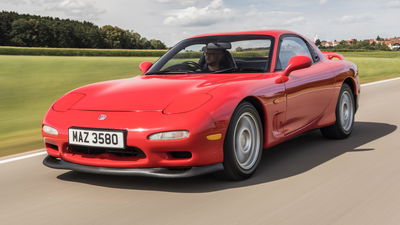Are Electric Cars Too Fast For Their Own Good?

Unlike many Luddites in the car community, I’m not against the massive expansion of electric cars. The handwringing bleats about how EVs are the death of automotive fun is, clearly, nonsense. Electric motors take acceleration to a whole new level and carmakers still like making cars that are fun to drive. It’s just different.
But that’s not what this musing is about. What we do need to talk about is whether this newfound weapon of instant oomph is being wielded correctly.
Judging by some recently unleashed cars, it’s apparently now very easy to give EVs fairly ludicrous levels of power and torque. Zero-to-62mph times that were once the preserve of supercars are now fairly commonplace in electric SUVs.
Dare I say it, though – some electric cars now have too much power.
When I drove Volvo’s original electric XC40 – without having read much blurb about it beforehand – I was blown away by its straight-line acceleration. North of 400bhp in a small family SUV? Hilarious.

Soon after, I tried the Genesis GV60 – again, with little introduction. Noting a “Boost” button on the steering wheel, I pressed it, hit the throttle and nearly left a mess on the seat. It’s got nearly 500bhp, in a car that’s not otherwise trying to be particularly sporty. I didn’t stop laughing for ages.
However, I’m old and boring now. I know this. I have a mortgage and a family. If you’d asked me 25 years ago if a car could have too much power, I’d have flicked the Vs and roared off with the whoosh of a forced-induction kit hamfistedly crammed into the engine bay of a Mk6 Ford Escort.
But now my tastes are more refined. I’m lucky enough to have driven a large number of cars over the years, and I like a machine that’s well-rounded, where all aspects of its engineering have been considered holistically. For all the unexpected hilarity of the Volvo and the Genesis, this abundance of power can overwhelm things.

My colleague Ryan Hirons recently drove the Brabus version of the Smart #1, which pushes the power from its electric motors up to 422bhp with 400lb ft. “It’s very quick and amusingly so,” he says. “But the chassis hasn’t been altered other than some front suspension adjustments to deal with the weight of the front motor. As a result, it pitches a lot when you floor it. It’s definitely too soft and almost scarily so. It’s worrying how easy that performance is to get.”
The same is true, he says, of the MG4 XPower, which has 429bhp in a car the size of a Ford Focus. It’s punchy, but too punchy for its own good.
In fairness, this is not just an EV problem. I’ve driven several supercars that are amazing on a track, but borderline pointless on the road because you can barely use a fraction of their power. Part of the joys of cars like the Toyota GT86 and the Mazda MX-5 is that their power levels perfectly complement the characteristics of the chassis.

The latest Porsche Taycan Turbo S has 939bhp and a 0-62mph time of 2.4 seconds. Now, I have considerably more confidence in Porsche that all those horses will be well-deployed than I do in MG (no offence, MG engineers, you’re doing ok). And if you want to beat your mates at Top Trumps, that level of power in a production car is incredible. But really, what are you going to do with it, other than swing it around to make yourself feel more virile?
The electric car revolution can and will bring us some outstanding cars and I can’t wait to try them. But please, engineers, remember – with great power comes great responsibility.















Comments
No comments found.